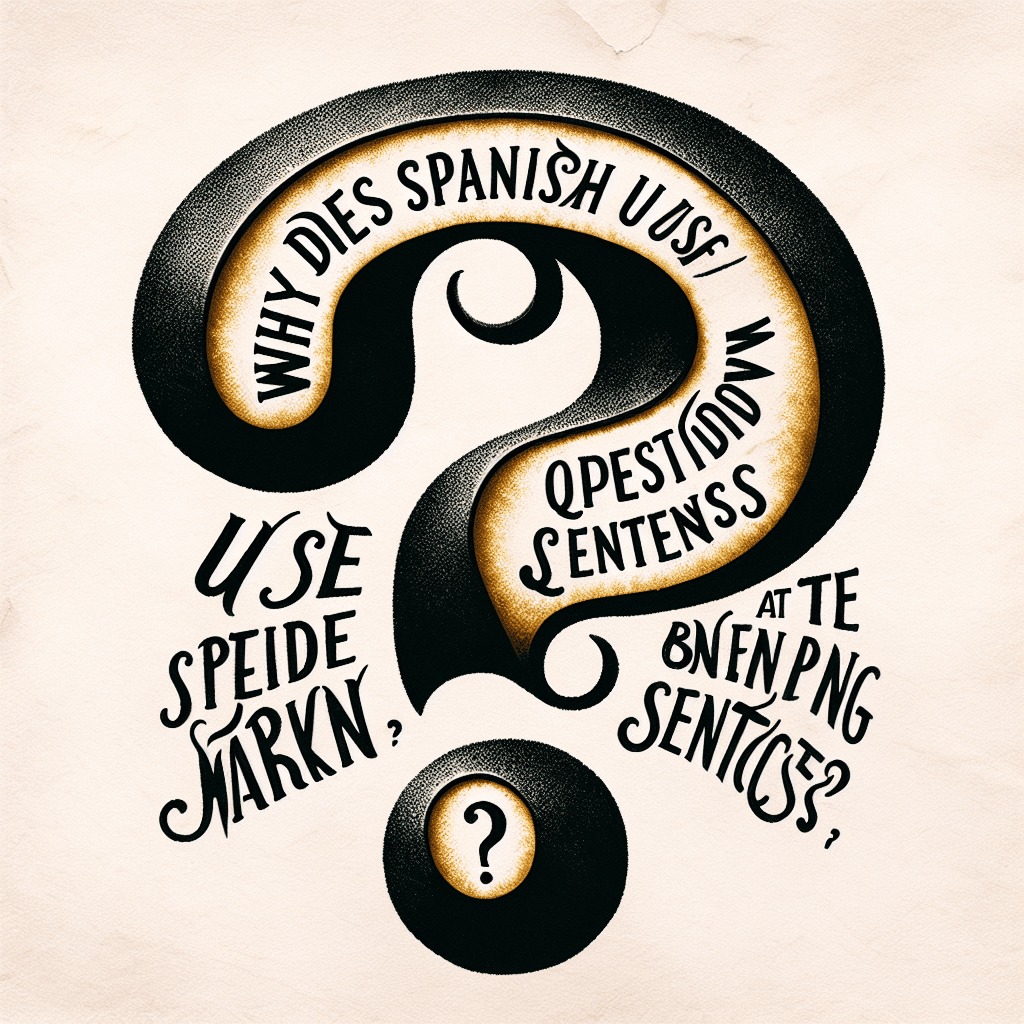Why does Spanish use upside-down question marks at the beginning of sentences
Ever read a long sentence and only realized it was a question at the very last word? Discover the brilliant, centuries-old solution Spanish created to master the art of tone from the very first letter.


Too Long; Didn't Read
TLDR: Spanish uses an upside-down question mark (¿) to signal the start of a question for clarity and tone. Unlike English, Spanish sentence structure can be ambiguous, so the initial mark tells you it's a question right away, instead of having to wait until the end.
Solving the Mystery: Why Does Spanish Use Upside-Down Question Marks at the Beginning of Sentences?
If you've ever started learning Spanish or simply glanced at a Spanish text, you've undoubtedly encountered a peculiar piece of punctuation: the inverted question mark (¿). It stands at the beginning of a question, a mirror image of the familiar mark that ends it. For many English speakers, this raises an immediate question of its own: why? Is it just for decoration? The answer is a fascinating blend of history, logic, and a desire for absolute clarity. This post will unpack the reasons behind this unique feature of Spanish orthography.
A Royal Command for Clarity
The use of the inverted question mark isn't an ancient tradition that evolved over millennia. Instead, it was a deliberate and relatively modern decision made by an official institution. In 1754, the Real Academia Española (Royal Spanish Academy), the official guardian of the Spanish language, published the second edition of its book on orthography. It was here that the Academy mandated the use of an opening, inverted question mark (¿) and exclamation mark (¡).
The reasoning was purely practical: to provide clarity for the reader.
In English, we often change the word order to signal a question. For example:
- Statement: "You are going to the party."
- Question: "Are you going to the party?"
Spanish, however, has a more flexible sentence structure. A statement and a question can have the exact same word order, with the only difference being the speaker's intonation. For instance:
- Statement: Vienes a la fiesta. (You are coming to the party.)
- Question: ¿Vienes a la fiesta? (Are you coming to the party?)
Without the initial ¿, a person reading a long sentence aloud wouldn't know it was a question until they reached the very end, forcing them to re-read it with the correct rising intonation. The Academy decided this was inefficient and introduced the opening mark to solve the problem.
Why Intonation Matters: The Practical Reason
The core function of the ¿ is to act as a crucial signpost for intonation—the rise and fall of the voice in speaking. It immediately tells the reader, "Get ready, the sentence you are about to read is a question." This allows the reader to apply the correct interrogative tone from the very first word.
This is especially helpful in long or complex sentences. Consider a sentence where the question is embedded within a larger statement. The inverted mark shows precisely where the interrogative part begins.
For example: Si no has terminado tu trabajo, ¿cómo piensas salir con tus amigos? (If you have not finished your work, how do you plan to go out with your friends?)
Here, the ¿ makes it clear that only the second clause is a question, guiding the reader's pronunciation and comprehension perfectly. This system eliminates ambiguity and makes reading aloud a smoother, more accurate process.
Slow Adoption and the Digital Age
Despite the logical reasoning, the Academy's rule wasn't adopted overnight. It took more than a century for the practice to become standardized in printing and formal writing. Many writers initially ignored the rule or considered it an unnecessary flourish.
Today, the rule faces a new challenge: the digital world. In the fast-paced, informal communication of texting, social media, and online chats, it is very common for native Spanish speakers to omit the opening ¿ and ¡. The primary reason is speed and convenience, as typing the inverted marks on many keyboards requires an extra step.
However, in any formal context—such as academic papers, professional emails, books, and journalism—the rule is still strictly followed. The Real Academia Española continues to uphold it as the grammatically correct standard, ensuring that the quest for clarity that began in the 18th century continues to define formal Spanish writing.
In conclusion, the upside-down question mark is far more than a stylistic quirk. It is a logical and elegant solution to a structural feature of the Spanish language. Decreed by the Royal Spanish Academy in the 18th century, its purpose is to signal interrogative intonation from the very beginning of a sentence, ensuring clarity for the reader. While informal digital communication may sometimes skip it for convenience, the ¿ remains a fundamental and practical tool in formal Spanish, showcasing how punctuation can uniquely evolve to meet the needs of a language.
More Articles

Why do movie punches sound so much crunchier and louder than real ones?
That sickening, bone-crunching punch you hear in the movies is a lie, and the secret ingredient is probably sitting in your refrigerator right now.

What makes a beer bottle suddenly foam over just from a light tap on top?
It’s not magic, it’s a shockwave; discover the explosive physics that turns a gentle tap on your beer bottle into an instant foamy geyser.

Why do police officers touch the back of a car during a traffic stop?
It’s not a random habit; that simple touch is a calculated, old-school tactic designed to leave a crucial and potentially life-saving piece of evidence behind.